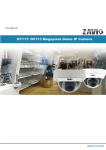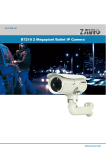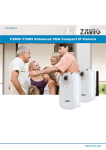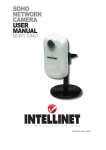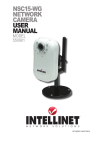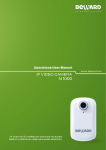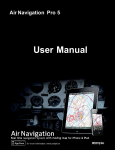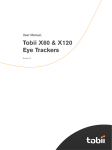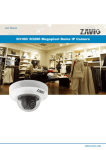Download Date Time
Transcript
Content Safety Instruction……………………………………………………………………………..…………………..2 Minimum System Requirement & Product Feature……………………………………………………………4 Minimum System Requirement………………………………………………………………………………….4 Product Feature………………………………………………………….……………………………………….5 Main Page………………………………………………………………………………………………………….6 Basic Setup…………………………………………………………………………………………...……………8 Account…………………………………………………………………………………………….……………8 Network………………………………………………………………...………………………………………9 Date Time………………………………………………………………………………….……………………12 Video…………………………………………………………………………………………………...………13 Audio…………………………………………………………………………………………………..……….15 Live View…………………………………………………………………………………………….……………16 Video……………………………………………………………………………………………….………...…16 Audio……………………………………………………………………………………………….…...………16 Camera Setting…………………………………………………………………………………….……....……16 Playback…………………………………………………………………………………….………………….…18 Network Storage………………………………………………………………………….……………………..18 Local Storage…………………………………………………………………………….………………..….…18 Event………………………………………………………………………………….……………………….…..18 Event Server…………………………………………………………………………….………………..….….18 Event List………………………………………………………………………….………………..…………..19 Motion Detection………………………………………………………………….…………….…...……….…20 Tampering Detection……………………………………………………………….…………….…..…….…...20 Schedule………………………………………………………………………….……………………….…….20 System…………………………………………………………………………………….………………….……21 Maintenance…………………………………………………………………………………………….…...….21 Date Time…………………………………………………………………………………………….…………21 Security……………………………………………………………………………………………….…………21 Network Basic………………………………………………………………………………………….……….22 Network Advanced………………………………………………………………..…………………….………22 Digital I/O…………………………………………………………..………………………………..….………24 LED………………………………………………………………..………………………………...………….24 System Log…………………………………………………………………………..…………….……………24 1 User Manual Safety Instruction Before you use this product This product has been designed with safety in mind. However, the electrical products can cause fires which may lead to serious body injury if it is not used properly. To avoid such accidents, be sure to heed the following. Legal Caution Video and audio surveillance can be forbidden by laws that vary from country to country. Check the laws in your local region before using this product for surveillance purposes. Don't open the housing of the product Don't try to open the housing or remove the covers which may expose yourself to dangerous voltage or other hazards. Don't use the accessories not recommend by the manufacturer Heed the safety precautions Be sure to follow the general safety precautions and the “Operation Notice.” Operation Notice - Operating or storage location Avoid operating or storing the camera in the following locations: • Extremely hot or cold places (Operating temperature: -10 °C to + 50 °C [14 °F to 122°F] ) • Exposed to direct sunlight for a long time, or close to heating equipment (e.g., near heaters) • Close to water (e.g.,near a bathtub, kitchen sink, laundry tub) • Close to sources of strong magnetism • Close to sources of powerful electromagnetic radiation, such as radios or TV transmitters • Locations subject to strong vibration or shock In case of a breakdown In case of system breakdown, discontinue use and contact your authorized dealer. In case of abnormal operation • If the unit emits smoke or an unusual smell. 2 • If water or other foreign objects enter the cabinet. • If you drop the unit or damage the cabinet:1 Disconnect the cable and the connecting cables. 2 Contact your authorized dealer or the store where you purchased the product. Transportation When transporting the camera, repack it as originally packed at the factory or in materials of equal quality. Ventilation To prevent heat buildup, do not block air circulation around the device. Cleaning • Use a soft, dry cloth to clean the external surfaces of the device. Stubborn stains can be removed using a soft cloth dampened with a small quantity of detergent solution, then wipe dry. • Do not use volatile solvents such as alcohol, benzene or thinners as they may damage the surface. 3 Minimum System Requirement & Product Feature System Requirement For normal operation and viewing of the network camera, it’s recommended that your system meet these minimum requirements for proper operation: Item Requirements CPU Minimum Intel® Core 2 Duo or higher (Core i3 or above is recommended) Graphic Card 256 MB RAM graphic cards (or equivalent on-board graphic cards) RAM Minimum 1 GB of RAM (2GB or above is recommended) Operating System Window 2000, 2003, XP, Vista or Windows 7 Web Browser Internet Explorer 8 or later Mac OS Leopard 10.5 Note: 1. If using Windows 98 or Windows ME, please install IP Installer before using WEB UI to ensure the system runs normally. 2. If not able to view the recorded video file, please install Xvid codec while installing Intelligent IP Installer. (For Windows 98, ME or 2000 server, the codec might not work properly. Please download Xvid codec 1.0 from the internet.) 3. Please keep updating the latest Windows software and service package. (Ex: Net Framework, Windows Media Player, Enhance ActiveX Security) 4 Product Features SYSTEM Resolutions H.264/ Motion JPEG Compressing format H.264/ Motion JPEG Frame Rate Up to 20 fps at 2048 x 1536, up to 30 fps at 1920 x 1080 Rotation: Mirror, Flip, Mirror Flip Image settings Brightness / Contrast / Saturation/ Sharpness Overlay capabilities: time, date, text and privacy image Image snapshot Yes Video Recording Yes Full Screen Viewing Yes Digital Zoom 10x digital Mobile Phone Live View Through 2.5 WAP(above 3G is recommended) Alarm Sending Network storage/ FTP/ SMTP/ HTTP event Security Password Protection / HTTPS encryption / IP Filter Input: alarm buffer, motion detection, audio detection Output: network storage, FTP, SMTP, Pre-and post alarm buffer Bonjour, TCP/ IP, DHCP, DNS, DynDNS, PPPoE, ARP, ICMP, FTP, SMTP, NTP, UPnP, RTSP, RTP, RTCP, HTTP, HTTPS, SSL, TCP, UDP, ISMA Alarm Buffer Supported protocols Simultaneous Connection Up to 10 users Operating conditions -10℃~ 50℃ (14℉ ~ 122℉) HARDWARE Lens Ø 14 Varifocal Board lens Local Storage Support MicroSD/ SDHC card Power 12V DC, Power comsumption: Max. 8W NETWORK Ethernet 10/ 100 Base T 5 Main Page Toolbar of Main Page Icon Home Setting Pause Stop Recording Snapshot Sound Talk Zoom Full screen Function Instruction Click this tab to return to the page of live view. Click this tab leads to set up all the configuration. Click this tab to hold the current video stream for a moment. Click this tab could stop the video being displaying. This tab is used to record the current video stream, it turns red when starting to record. The video would be filed by the current date and can be saved at anywhere you want to place. This tab is used to take a snapshot of the current image. The image can be saved at anywhere you want to place. This is listen tab, click on it switches to the mute mode. Use the slider to control the volume. This is talk tab, click on it switches to the mute mode. Use the slider to control the volume. Click this tab to adjust the digital zoom range. Click this tab to stretch the view to the entire screen. Press the ESC on the computer keyboard to cancel the full screen. 6 Date Time Current Date / Time It displays current time and date of IP Camera and PC that you connected, and you may select the Date/Time format as you wish in the drop-down menu. Note: If you would like the Date / Time information shows on the Live View screen, please check “Basic Setup →Video →Overlay → Overlay Type → Time Stamp ” and save the setting. Synchronization Method Keep current setting: Select this mode to keep the current date and time of this IP Camera. Synchronize with Client PC: Select this mode to keep the date and time of this IP Camera is the same as the monitoring PC. Manual setting: Select this mode to adjust manually the date and time of this IP Camera. Synchronize with NTP: Specify the NTP server name and click “Update now” to synchronize the date and time of this IP Camera with those of the time server, known as the NTP server. Time Zone Time Zone: Select the Time Zone format of Greenwich Mean Time among different cities. The time display will be the same as the current date / time option. Daylight Saving Time: There are two modes to choose for setting up daylight saving time. By Date: Set the start and end time by select month, day, hour, and minute. By Week Number: Set the start and end time by select month, week, hour, and minute. Note: The NTP server (Network Time Protocol) is the time server which is an Internet standard protocol built on the top of TCP / IP. This assures accurate synchronization to the millisecond of computer clock times in a network of computers. 12 Video Video Setting Image Image Rotated: Select the screen display “flip”, “mirror”, or “mirror + flip”. Video clip format: Select RECORDING compression format H.264 or MJPEG. H.264: H.264 can decrease the bandwidth usage and further apply on 3G. We support High, Main and Baseline, three H.264 profiles. In the same video quality, High profile provides higher compression than other two, but needs more processing power to decode. MJPEG: Motion JPEG stream uses considerable amounts of bandwidth, but provides excellent image quality and access to every image contained in the stream. Capture mode: You may choose the mode of 20fps at 2048x1536 or 30fps at 1920x1080. When you change the capture mode, the system will reboot for once. Overlay Text information can be showed on the display screen, such as Date / Time and the user-defined title. Privacy Mask Privacy Mask is an area of solid color that bans users from viewing part of monitored area. 13 Click “Add” and a setting pop-up window comes out. A translucent rectangle is located at up left of the image, drag it to where you wish to cover and resize it. Enter a descriptive name, select the color and enable it then save. Profile There are five stream profiles available for quick set-up. These settings can be adjusted and new customized profiles can be created. Each profile has a descriptive name, describing its usage and/or purpose. The profiles can be selected from the Live View page. Create a new stream profile: Click “Add” and a setting pop-up window comes out. Edit the stream profile: Click the profile you appoint to modify and click “Edit” to do the further setting. 14 Day/Night IR Cut Filter Mode: There are 4 modes for IR cut filter to switch Auto, Night Mode, Day Mode, Schedule to make IR cut filter work based on different conditions. IR Cut Filter Switch Delay: This is interval time(by seconds) when the IR cut filter switch has been implemented till it indeed works. IR Cut Filter Threshold: Dark- This is the threshold for the IR cut filter image environment being bright turning to dark. Bright- This is the threshold for the IR cut filter image environment being dark turing to bright. IR Mode: Select one among four modes --- auto / active / inactive / schedule. It decides IR working condition. IR Level (Spot/ Wide): The strength of IR light can be adjusted upon application environment. Audio Audio Input Select the external microphone input gain value you wish in the drop-down menu, and based on your region to select the proper codec and save all settings. G.711 U-law : one codec for “Computer Audio”, used in North America & Japan areas. G.711 A-law : another codec for “Computer Audio”, used in Europe and the rest of the world. Audio Output Select the external speaker output gain value you wish in the drop-down menu and save it. 15 Live View Video Please refer to p.13 Audio Please refer to p.15 Camera Setting Image Setting Image Enhancement Brightness: The image brightness can be adjusted in the range 0-100, the a higher value produces a brighter image. Saturation: Adjust the saturation in the range 0-100, the higher value gets more colorful image. Contrast: Adjust the image's contrast by raising or lowering the value in the range 0-100. Sharpness: Controls the sharpness applied to the image in the range 0-100. A sharper image might increase image noise especially in low light conditions. A lower setting reduces image noise, but the image would be less sharp. White Balance Color Tone: The color tone can be adjusted in the range -127 to 127, it depends on individual preference to select. Auto White Balance: This is used to adjust for the different colors present in different light sources, to make the colors in the image appear the same. The IP camera can be set to automatically identify the light source and compensate for its color. Alternatively, the type of light source can be manually selected from the drop-down menu. Exposure Setting Exposure Frequency: The default setting of lighting environment is Auto. However, you may select 50 or 60 Hz upon the lighting environment of your country. The hold current option fixes the current exposure settings. Automatic exposure: You can manually set the exposure value, which ranges from 0-100(dark to bright). Exposure time: Select a proper exposure time according to the light source of the surroundings. The exposure times are selectable from 1/2 second to 1/10000 second. Shorter exposure time brings less light. Gain: According to the surroundings in the low light and make the range among 1x-16x. The higher value makes brighter image, however brings more noise at the same time. 16 Date Time Current Date / Time It displays current time and date of IP Camera and PC that you connected, and you may select the Date/Time format as you wish in the drop-down menu. Note: If you would like the Date / Time information shows on the Live View screen, please check “Basic Setup →Video →Overlay → Overlay Type → Time Stamp ” and save the setting. Synchronization Method Keep current setting: Select this mode to keep the current date and time of this IP Camera. Synchronize with Client PC: Select this mode to keep the date and time of this IP Camera is the same as the monitoring PC. Manual setting: Select this mode to adjust manually the date and time of this IP Camera. Synchronize with NTP: Specify the NTP server name and click “Update now” to synchronize the date and time of this IP Camera with those of the time server, known as the NTP server. Time Zone Time Zone: Select the Time Zone format of Greenwich Mean Time among different cities. The time display will be the same as the current date / time option. Daylight Saving Time: There are two modes to choose for setting up daylight saving time. By Date: Set the start and end time by select month, day, hour, and minute. By Week Number: Set the start and end time by select month, week, hour, and minute. Note: The NTP server (Network Time Protocol) is the time server which is an Internet standard protocol built on the top of TCP / IP. This assures accurate synchronization to the millisecond of computer clock times in a network of computers. 12 Video Video Setting Image Image Rotated: Select the screen display “flip”, “mirror”, or “mirror + flip”. Video clip format: Select RECORDING compression format H.264 or MJPEG. H.264: H.264 can decrease the bandwidth usage and further apply on 3G. We support High, Main and Baseline, three H.264 profiles. In the same video quality, High profile provides higher compression than other two, but needs more processing power to decode. MJPEG: Motion JPEG stream uses considerable amounts of bandwidth, but provides excellent image quality and access to every image contained in the stream. Capture mode: You may choose the mode of 20fps at 2048x1536 or 30fps at 1920x1080. When you change the capture mode, the system will reboot for once. Overlay Text information can be showed on the display screen, such as Date / Time and the user-defined title. Privacy Mask Privacy Mask is an area of solid color that bans users from viewing part of monitored area. 13 Click “Add” and a setting pop-up window comes out. A translucent rectangle is located at up left of the image, drag it to where you wish to cover and resize it. Enter a descriptive name, select the color and enable it then save. Profile There are five stream profiles available for quick set-up. These settings can be adjusted and new customized profiles can be created. Each profile has a descriptive name, describing its usage and/or purpose. The profiles can be selected from the Live View page. Create a new stream profile: Click “Add” and a setting pop-up window comes out. Edit the stream profile: Click the profile you appoint to modify and click “Edit” to do the further setting. 14 Day/Night IR Cut Filter Mode: There are 4 modes for IR cut filter to switch Auto, Night Mode, Day Mode, Schedule to make IR cut filter work based on different conditions. IR Cut Filter Switch Delay: This is interval time(by seconds) when the IR cut filter switch has been implemented till it indeed works. IR Cut Filter Threshold: Dark- This is the threshold for the IR cut filter image environment being bright turning to dark. Bright- This is the threshold for the IR cut filter image environment being dark turing to bright. IR Mode: Select one among four modes --- auto / active / inactive / schedule. It decides IR working condition. IR Level (Spot/ Wide): The strength of IR light can be adjusted upon application environment. Audio Audio Input Select the external microphone input gain value you wish in the drop-down menu, and based on your region to select the proper codec and save all settings. G.711 U-law : one codec for “Computer Audio”, used in North America & Japan areas. G.711 A-law : another codec for “Computer Audio”, used in Europe and the rest of the world. Audio Output Select the external speaker output gain value you wish in the drop-down menu and save it. 15 Live View Video Please refer to p.13 Audio Please refer to p.15 Camera Setting Image Setting Image Enhancement Brightness: The image brightness can be adjusted in the range 0-100, the a higher value produces a brighter image. Saturation: Adjust the saturation in the range 0-100, the higher value gets more colorful image. Contrast: Adjust the image's contrast by raising or lowering the value in the range 0-100. Sharpness: Controls the sharpness applied to the image in the range 0-100. A sharper image might increase image noise especially in low light conditions. A lower setting reduces image noise, but the image would be less sharp. White Balance Color Tone: The color tone can be adjusted in the range -127 to 127, it depends on individual preference to select. Auto White Balance: This is used to adjust for the different colors present in different light sources, to make the colors in the image appear the same. The IP camera can be set to automatically identify the light source and compensate for its color. Alternatively, the type of light source can be manually selected from the drop-down menu. Exposure Setting Exposure Frequency: The default setting of lighting environment is Auto. However, you may select 50 or 60 Hz upon the lighting environment of your country. The hold current option fixes the current exposure settings. Automatic exposure: You can manually set the exposure value, which ranges from 0-100(dark to bright). Exposure time: Select a proper exposure time according to the light source of the surroundings. The exposure times are selectable from 1/2 second to 1/10000 second. Shorter exposure time brings less light. Gain: According to the surroundings in the low light and make the range among 1x-16x. The higher value makes brighter image, however brings more noise at the same time. 16 Low light behavior: This is the operation aims at low light and night mode. According to the surroundings you can manually set the preferable settings differ from the regular “Exposure Settings”. Nevertheless, the low light behavior can be scheduled up by working day, weekend, and night mode as user’s preference. Backlight Compensation: It makes the object clearer display when the image background is too bright or the object is too dark. Iris Control User may manually turn on the iris control or set it to auto. Wide Dynamic Range Enable Wide Dynamic Range auto to improve the exposure when both bright and dark areas simultaneously in the field of view of the camera. Select mode ON to manual the level which goes from 0-255, the larger number brings stronger influence, and the default is off. Noise Reduction Select the period you wish the noise reduction being executed in the drop-down menu, there are working day, weekend, and night mode. The range of noise reduction is 0~35, and the default setting is auto with level 15. 17 Playback Network Storage Network storage provides the storage function for saving image files to the specified computer and folder connected with the operating computer. Before using this function you must go to Event Server in Event to configure all settings and make the recording file saved here. Local Storage Memory card provides local storage function for saving image files to the specified SD card (for Class 4 or above) in your camera. This function can be enabled only when you insert SD card to the camera, and the SD/SDHC card works well. Before using this function you must go to SD card in Event to configure all settings and make the recording file saved here. Event Event Server Event Server Click “Add” to create a event server then the setting page pops up. Name it, select your network type put on the storage location. This is optional to create the password for certain group to use it. Then click the “Test” button to see if it works, it will show the information on the pop-up window to see your setting if has been made successfully. We offer Snapshot and Video two types of event transmission to select. When you choose Snapshot, there is a range 0~7 seconds can be selected individually for pre-event and post-event. Two suffix options for naming image file by None and Date Time. 18 SD Card Make sure to insert the SD Card first then click “on”. Create a folder name for event server in SD Card. Optional selection for overwrite the previous file or not, if not, you may set a warning when the capacity below the following percentage:5%, 10%, 25% and 50%. Event List Event List General Name the event file and make it on or off. Trigger You may activate the following trigger types as you wish depends on various conditions: Motion Detection: Click it on for using Motion Detection function as a sensor. You must configure motion detection function before taking this as the trigger. Set minimum time interval between 2 triggers, and choose the desired detection area. The detection type individually stands for the following meanings : Start: The trigger would be activated when the target object starts to move. Stop: The trigger would be activated when the target object stops to move. Tampering Detection: This setting is set for the trigger will be started for the duration of tampering lasts you configure. The Duration range is from 5 seconds to 900 seconds. Digital Input: This can be set to control the external alarm input of I/O port on the rear of the device to start the trigger. Periodical: This can be set the certain period(by minute) to start the trigge. Action There are three choices for action taking which is optional for user to select all of them or part of them: Send Image、Send Notification and Activate Digital Output. Send Image: You may set up where the image sent to, options like event server and SD card. You must configure it first, please refer to Event Server. Send Notification: Firstly go to HTTP server configure the HTTP server URL, port, User ID, Password, and Proxy server settings. Note: The Setting of URL should be the same as CGI. Activate Digital Output: Choose this option to enable the external digital output device when a trigger is triggered. 19 Schedule You may set up the event schedule as “always” or scheduled by working day, weekend or night mode. You must configure schedule before using it. Scheduled Recording General Name the recording file and make it on or off. Action File Size: You can manually write in the file size as the suggested range. Event Server: You can configure Network Storage or Local Storage, and Network storage server can only be added once. Schedule You may set up the event schedule as “always” or scheduled by working day, weekend or night mode. You must configure schedule before using it. Motion Detection Add the motion detection zone and name it, you can adjust the zone of detection with the mouse. There are 5 for detection zone at maximum. The bar on the top of motion detection area is red when the alarm is triggered. Threshold: Set the threshold of the alarm in the motion detection zone. The higher threshold is, lesser detections can be triggered. Sensitivity: Set the sensitivity for motion detection zone. The higher sensitivity is, the more sensitive it gets. Tampering Detection Select “on” if you want to activate the tempering detection. Trigger Duration: This setting is set for the trigger will be started for the duration of tampering lasts you configure. The duration range is from 5 seconds to 900 seconds. Schedule The schedule is made for Event List to set the recording period. There are already 3 modes(Working Day、 Weekend and Night Mode) has been set for user, there are 7 more modes are available to set manually. 20 System Maintenance Restart Restart button is for reboot the IP Camera digitally, you may reboot the camera manually or automatically. Click “on” and shows two modes for user to reboot the camera automatically. Sequential Mode offers the selection that how many days you would like to reboot, 7 days at most. Schedule Mode is able to select the certain day and time to reboot. Backup/Restore Default: Click this button to recover this IP Camera to the factory default setting. A confirmation dialogue will appear and then click “OK” to execute. The network indicator on this IP Camera will start to blink. This IP Camera will reboot automatically after completing adjustments to the default setting. Don't turn off this IP Camera until the device reboots. Furthermore, the IP and Date Time that are already set up can be fixed. Backup: You can save the setting data of this IP Camera into a file. Click “Save” and follow the instructions on the browser to save the setting data file to the location you specified. Restore: Download the saved setting data of this IP Camera. Click “Browse” and select saved file. Click “OK” and this IP Camera is adjusted according to the loaded data and then restarted. Firmware Upgrade Update the device software. Click “Browse” and select the file for updating. A confirmation dialogue will appear. Click “OK” to start. This IP Camera will reboot upon completion. Date Time Please refer to p.12 Security Account Please refer to p.8 21 IP Address Filter Once enabled it, the listed IP address are allowed or denied access to the product. Add the IP Address that you’d like to allow or deny and select allow or deny from the list and save it. HTTPS HTTPS is a URL scheme used to indicate a secure HTTP connection. It is syntactically identical to the http:// scheme normally used for accessing resources using HTTP. Using an https: //URL/ with a different default TCP port (443) and an additional encryption / authentication layer between the HTTP and TCP. You can use the IP camera through HTTPS easily by using https:// instead of http://. Create & Install: Create a self-signed certificate for HTTPS to recognize. Installed Certificate: Display or remove the properties of the installed certificate. HTTPS Connection Policy: Set HTTPS connection policy for different level of users. To use the HTTPS encryption, please set up “Create self-signed certificate” for the first time you use the HTTPS function, and then set up the connection policy for different users. Note: When enable HTTPS with RTSP on mode, the IP Camera only protect the setting such as username and password and do not protect video and audio. When enable HTTPS with RTSP off mode, the IP Camera will protect all setting including video and audio. Network Basic Please refer to p.9 Network Advanced RTSP General RTP Port Range: The default value of port range is 5000 ~ 7999 and can be changed from 1124 to 65534. RTSP Port: The default value is 554. If the IP Cameras connected with router and installed outside are over 2 sets and all of them need support RTSP, please fill the value in the blank space in the range from 1124 to 65534. RTSP Configuration Configure the RTSP by profile, then enable or disable the authentication. 22 UPnP If you have a Router to access to internet and the Router supports UPnP IGD function, you need to turn on the UPnP Port Forwarding function. HTTP port: Enter the HTTP port number and default HTTP port is 80. SSL port: Enter the SSL port number and default SSL port is 443. RTSP port: Enter the RTSP port, default value is 554 for computer view. Note : UPnP (Universal Plug and Play): UPnP is a set of computer network protocol. It allows devices to connect seamlessly and simplify the implementation of networks in the home and corporate environments. Bonjour Bonjour, also known as zero-configuration networking, enables automatic discovery of computers, devices, and services on IP networks. Bonjour uses industry standard IP protocols to allow devices to automatically discover each other without the need to enter IP addresses or configure DNS servers. Device Name: Enter Device Name you wish. Note: How to use Bonjour in your Windows Browser UI? Please check the link below: http://www.apple.com/support/downloads/bonjourforwindows.html DDNS DDNS is a system which allows the domain name data held in a name server to be updated in real time. The most common use for DDNS is allowing an internet domain name to be assigned to a computer with a varying / dynamic IP Address. This makes it possible for other sites on the internet to establish connection to the machine without needing to track the IP Address themselves. Server name: Choose the DDNS Server from the list. User ID: Enter the user ID for authentication necessary for DDNS connections. Type it up to 64 characters. Password: Enter the password for authentication necessary for DDNS connections. Type it up to 32 characters. Re-type password: Re-type the password to confirm. Host name: Enter the host name that is registered to the DDNS server. Periodical Update: Update your DDNS information periodically. 23 Digital I/O You can set Alarm Input and Output function in this menu to control the I / O port on the rear of the device linked to the alarm detection and the timer. Select open circuit and grounded circuit as your alarm. LED This is optional for user to select to show the LED indicator or not to as the IP Camera is turned on. What benefit it gets when LED off is it’s not easily to be aware when somebody sneak in the space where the camera installed, especially at the darkness. System Log System Log Enable the remote log to let the log being saved in the remote server in case that the camera being cut down. Put on the server name and select the sever port and save it. 24

























